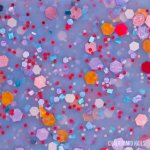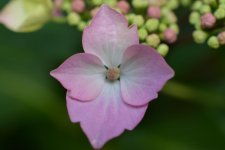Hello, I'm a bit of a newbie.. and I know absolutely nothing about lenses. I have a Nikon D3000 and I want to buy a Macro Lens. Which one would be the best for this camera? As I said, I am a newbie, so I am looking for something that is easy to use and that I don't need to fiddle around with settings much (auto focusing?). Clearly I have no idea what I'm talking about, HELP!
You are using an out of date browser. It may not display this or other websites correctly.
You should upgrade or use an alternative browser.
You should upgrade or use an alternative browser.
Help in buying a Macro Lens
- Thread starter sp4
- Start date
sonicbuffalo_RIP
Senior Member
Hi sp4.....and welcome to the site....you can see which macro lens I have in my signature....there are so many choices out there but the main question to ask yourself is how close do you want to be to the subject?
Thanks for the reply! Well here is the thing, I make nail polish and I would like to take close up shots of the polish inside the bottle and on my nails. Here are some photos that I've seen on the internet that I would like to achieve.
The glitter in nail polish is tiny, so when shot with a macro lens, they look like this:


The glitter in nail polish is tiny, so when shot with a macro lens, they look like this:


SkvLTD
Senior Member
Or get what I did, though you will be stuck in Manual Focus land. Most of the shots I've been doing 1:1 were done in manual focus despite auto capability.
First Impressions ? Tamron SP 90mm f/2.8 AF Macro ( E72 ) 1:1 ? Skvora Limited Photography

First Impressions ? Tamron SP 90mm f/2.8 AF Macro ( E72 ) 1:1 ? Skvora Limited Photography

Or get what I did, though you will be stuck in Manual Focus land. Most of the shots I've been doing 1:1 were done in manual focus despite auto capability.
First Impressions ? Tamron SP 90mm f/2.8 AF Macro ( E72 ) 1:1 ? Skvora Limited Photography

With the sometimes paper thin depth of field associated with macro photography, autofocus is quite often a hindrance rather than a help.
Hello, I'm a bit of a newbie.. and I know absolutely nothing about lenses. I have a Nikon D3000 and I want to buy a Macro Lens. Which one would be the best for this camera? As I said, I am a newbie, so I am looking for something that is easy to use and that I don't need to fiddle around with settings much (auto focusing?). Clearly I have no idea what I'm talking about, HELP!
The current macro lenses will focus close enough to see 1:1 magnification. 1:1 magnification means the image is the same actual size as the object photographed. In film days, after we developed the film, 1:1 meant the image on the film was same actual size as the subject object.
We cannot take a digital sensor out and look at it, but still same meaning, and 1:1 can be compared this way:
An object that is one inch in size (a coin or a stamp say) is 25.4 mm.
At 1:1, the image of this one inch object would be slightly larger than the width of a DX frame (24mm),
or it would be slightly larger than the height of a FX frame (24mm).
Either way, it would be magnified to 1:1 actual size.
Since most macro lenses do 1:1 today, the other difference is their focal length. Some Nikon macro lenses are 40 mm, 60 mm, 85 mm, 105mm, or 200 mm focal length. Other brands of macro lenses might be 90 or 150mm, etc.
Longer focal length is a telephoto lens (which is yet another effect), and we have to stand back farther to get everything in the frame. This can be a plus at 1:1, it allows more working room, the lens itself does not block the lighting (shadow on the the subject), and greater working distance may scare live bugs less.
However, this greater working distance can be a negative on a larger table top scene, the room may not be large enough to let a telephoto see the entire table top scene. For example (assuming 35mm film or FX), copy stand work typically uses 55 or 60mm lenses, since the copy stand cannot be tall enough to use a 105 or 150 mm lens.
At 1:1, the 60mm lens will have less than three inches in front of the lens (to the subject). About 2 7/8 inches.
At 1:1, the 105mm lens will have about six inches in front of the lens (to the subject). This is rather noticeable, and better (if at 1:1). But... of course the 60mm still can work. It just has to be closer, nearly half the distance.
Focus Distance is measured to the image plane at the rear of the camera, but this distance in front of lens is called the Working Distance. Six inches is a plus at 1:1. But for table top scenes, working distance of say 7 feet compared to only 4 feet may be awkward, if we cannot reach both subject and camera at same time, or if we don't have 7 feet of room.
Here is an excellent chart showing working distance (WD) of many macro lenses for Nikon.
http://www.jeffree.co.uk/pages/macro-lens-calcs.html
Last edited:
singlerosa_RIP
Senior Member
What's your budget?
What's your budget?
I think at the end of the day... that is the most important question.
Since the OP will be taking pictures of nail polish, and maybe some people's nails after completion. You may want to look into the 40mm f2.8 micro lens. This will give you a field of view of a 60mm lens, with allowing a shorter minimum focus distance. You can shoot at nearly ~6" away, and will keep within a minimum budget (sub $300 usd). Whereas you can step up to something around the 85-90mm group and be around $500-600 usd.
In the end it's all in what you feel comfortable with. Also do keep in mind there is a huge learning curve when shooting macro. So do not be discouraged as it will take time to perfect your shots.
I agree that price will make a big difference on which macro lens to recommend. Also if your going to shoot freehand (without a tripod) having a lens with vr (vibration reduction) can be a big help too.
So your budget for this type of lens will help a lot to narrow down the choices of what to recommend, and if your going to be using a tripod or not will also help in my opinion.
PS. Welcome to nikonites, and I hope you'll have a blast with your macro photography! Also in my signature you can click and check out our macro group! We'd love to have you join if your interested!
So your budget for this type of lens will help a lot to narrow down the choices of what to recommend, and if your going to be using a tripod or not will also help in my opinion.
PS. Welcome to nikonites, and I hope you'll have a blast with your macro photography! Also in my signature you can click and check out our macro group! We'd love to have you join if your interested!
I mainly do macro as I do a lot of insect and spider photography. My two lenses are 40mm macro with or without 20mm macro ring and the 18-55 kit lens mounted on a 36mm macro ring.
The 40mm is brilliant and allows me to get great close-ups of spiders' eyes which are about 1/10th of a millimeter in diameter. The kit lens + ring is a cheap alternative and allows even closer shots when taken down to 34mm.
In this photo, the head of the spider is about 1mm across. Taken using the 40mm.

The 40mm is brilliant and allows me to get great close-ups of spiders' eyes which are about 1/10th of a millimeter in diameter. The kit lens + ring is a cheap alternative and allows even closer shots when taken down to 34mm.
In this photo, the head of the spider is about 1mm across. Taken using the 40mm.
90mm Tamron would be my recommendation. Keeps you back about 11 inches so you're not casting shadow or invading personal space. The lens is very sharp and the price is great.
Tamron SP 90mm f/2.8 Di 1:1AF Macro Lens for Nikon AF AF272NII700

Tamron SP 90mm f/2.8 Di 1:1AF Macro Lens for Nikon AF AF272NII700
90mm Tamron would be my recommendation. Keeps you back about 11 inches so you're not casting shadow or invading personal space. The lens is very sharp and the price is great.
Tamron SP 90mm f/2.8 Di 1:1AF Macro Lens for Nikon AF AF272NII700
The specs in your Adorama link says FOCUSING DISTANCE is 11.4 inches at 1:1. This is measured to the image plane at the rear of the camera body. The body thickness and lens length is a factor in front of that.
This link Macro lens calculations
says the Tamron 90mm macro has a WORKING DISTANCE (in front of lens) of 95 mm at 1:1, which is 3.75 inches. Sort of how it works...
Which is about an inch more than a 60mm, and a couple inches less than a 105mm.
The specs in your Adorama link says FOCUSING DISTANCE is 11.4 inches at 1:1. This is measured to the image plane at the rear of the camera body. The body thickness and lens length is a factor in front of that.
This link Macro lens calculations
says the Tamron 90mm macro has a WORKING DISTANCE (in front of lens) of 95 mm at 1:1, which is 3.75 inches. Sort of how it works...
Which is about an inch more than a 60mm, and a couple inches less than a 105mm.
I should have explained that better. Poor word choice on my part. Thank you.
Fortkentdad
Senior Member
Depending on what you want to do check out the Post your Non-Macro Lense Depending on what you want to do you may or may not want to buy a Macro Lens. I have a Nikon 60mm "micro" and it is great, bought new for $500, seen used for about $300-$400.
Patrick M
Senior Member
Go for the Micro (Nikon's term for macro) 40mm f2.8/G
It's a lovely little lens, not expensive and will reward you, as it did me as a "newby", with some nice sharp images. When your experience builds, you may consider spending more, but I didn't - I love this lens.
Sent from my iPad using Tapatalk 2
It's a lovely little lens, not expensive and will reward you, as it did me as a "newby", with some nice sharp images. When your experience builds, you may consider spending more, but I didn't - I love this lens.
Sent from my iPad using Tapatalk 2
Attachments
Last edited:
SkvLTD
Senior Member
90mm Tamron would be my recommendation. Keeps you back about 11 inches so you're not casting shadow or invading personal space. The lens is very sharp and the price is great.
Tamron SP 90mm f/2.8 Di 1:1AF Macro Lens for Nikon AF AF272NII700
View attachment 97344
Except you're paying extra $100 for the "Di(gitial)" logo and a newer looking casing. The E72 model is pretty much the same and less expensive.
Englischdude
Senior Member
hi there,
i also have the 40mm micro lens from Nikon and can recommend this lens, it is also great as a walkaround/portrait lens too on a crop sensor body. If you want to start cheap, maybe you could also consider the raynox 250 glass which "clips" on the front of your kit lens. [MENTION=9753]Scott Murray[/MENTION] has had great results with this, only cost about 50 euros and can be used with practically any lens. Just a thought!
i also have the 40mm micro lens from Nikon and can recommend this lens, it is also great as a walkaround/portrait lens too on a crop sensor body. If you want to start cheap, maybe you could also consider the raynox 250 glass which "clips" on the front of your kit lens. [MENTION=9753]Scott Murray[/MENTION] has had great results with this, only cost about 50 euros and can be used with practically any lens. Just a thought!
Scott Murray
Senior Member
Have a read through here if you like - http://nikonites.com/macro/20481-everything-you-needed-know-about-macro.html
And this - http://nikonites.com/macro/16771-macro-lens-comparison.html
And this - http://nikonites.com/macro/16771-macro-lens-comparison.html
Last edited:







